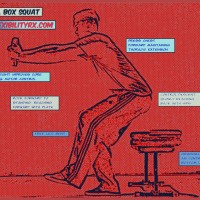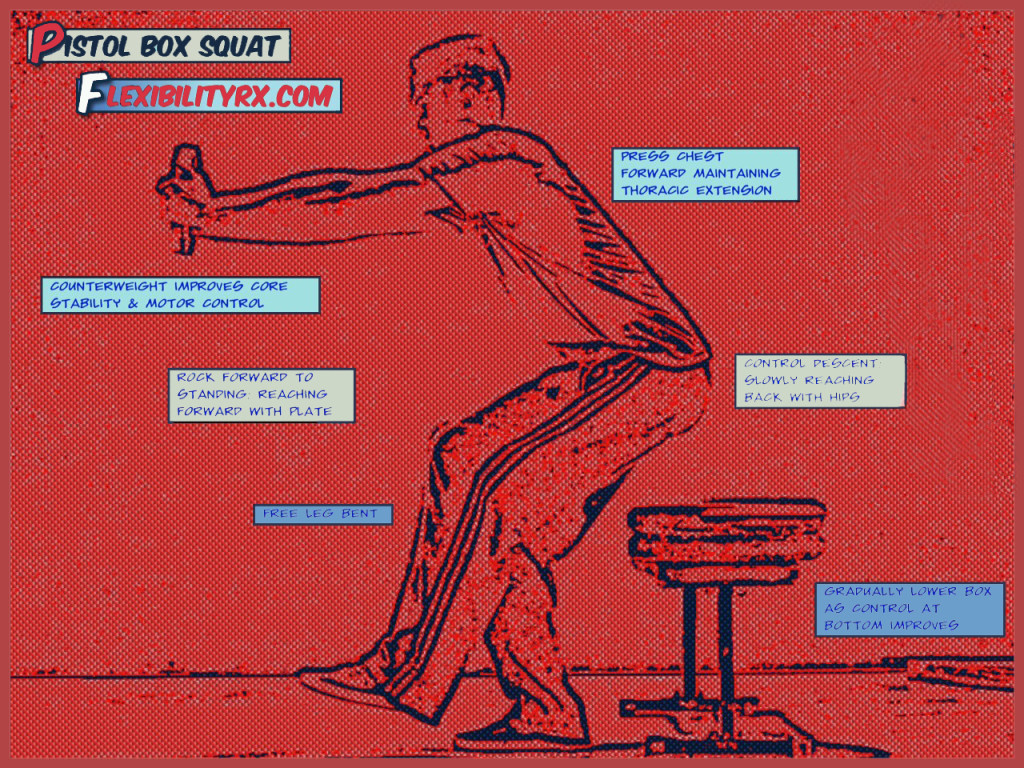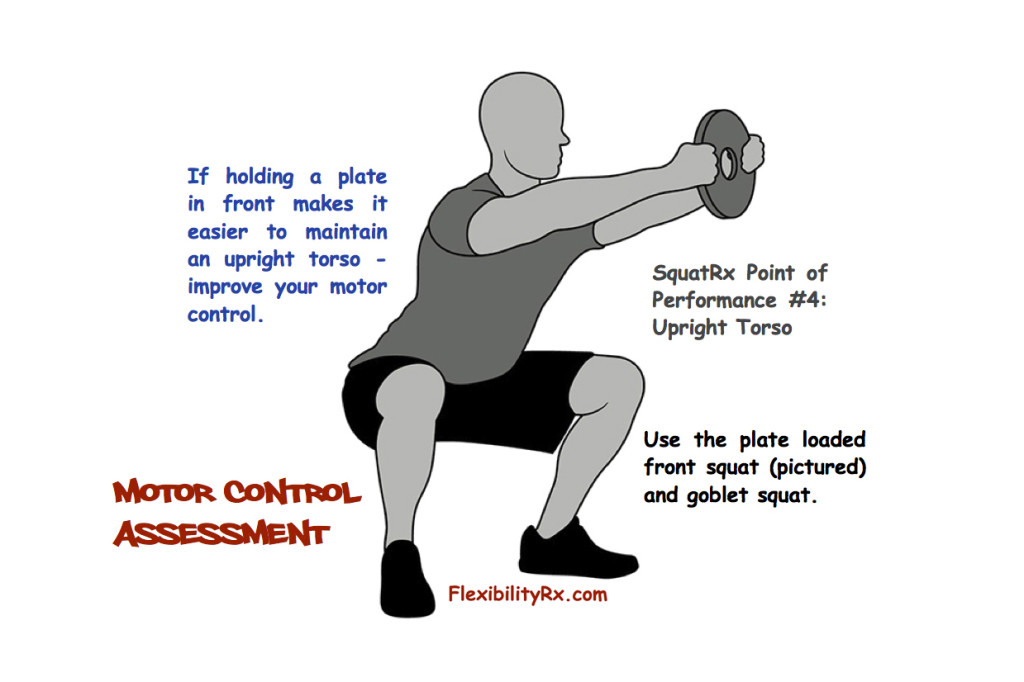
The Single Leg Box Squat
The single leg squat also known as the pistol squat is one of the best lower body exercises you can do in the gym. The problem is that most athletes lack the stability and flexibility to do a full pistol squat.
While there are many pistol variations and progressions, one of the best ways to work your way towards a good looking bodyweight pistol squat is the pistol box squat with counterweight. This exercise has long been a favorite of Mike Boyle, which he discussed in his classic text, “Advances in Functional Training.”
Three Elements of the Pistol Squat
#1: Improve Ankle Flexibility
#2: Use a Counterweight to Improve Motor Control
#3: Progress Squat Depth with the Box Squat
Ankle Flexibility
Before getting started with pistol squats you may want to improve your ankle dorsiflexion with the lower leg routine provided here. Good ankle range of motion allows the knee to track forward enough for the hips to shift backwards while keeping your weight on your heels.
The Plate Loaded Front Squat
Many athletes that struggle to keep their knees out, torso upright, and weight on their heels during an air squat have poor motor control. Performing squats with a plate in front or practicing goblet squats are great ways of improving core stability and motor control. Holding a weight in front also helps athletes maintain tension during squats for improved control at the bottom to prevent a rounding of the lumbar spine.
Ryan DeBell of, “The Movement Fix” recently wrote a great article called “Squatting’s Biggest Double Standard.” He points out that many athletes round their lumbar spine at the bottom of the pistol committing what is referred to as the ‘butt-wink.’ He explains that the same standard (neutral lumbar curve) should be applied to the pistol squat.
The Box Squat
One of the best corrective drills for a regular air squat is the box squat. The box squat allows an athlete to progress their squat depth over time by lowering the box as motor control at the bottom position improves. This is key to preventing the butt-wink and maintaining thoracic extension throughout both the pistol and regular squat.
The single leg box squat is a great exercise to improve hip motor control, core stability, and to correct side-to-side strength differences.
Keeping the free leg bent makes it easier to maintain a neutral lumbar curve and thoracic extension. Once an athlete is able to achieve greater depth with the pistol box squat they can remove the box and focus on extending the free leg for a greater challenge.
– Kevin Kula, “The Flexibility Coach” – Creator of FlexibilityRx™ – www.FlexibilityRx.com
Related Resources
FlexibilityRx™: Improving Ankle Dorsiflexion for the Squat (link)
FlexibilityRx™: Single Leg Exercises: Bulgarian Split Squat (link)
The Movement Fix: Squatting’s Biggest Double Standard (link)
Tags: box squat, pistol squat, single leg squat, single-leg training, unilateral leg training


Leave A Reply (No comments so far)
You must be logged in to post a comment.
No comments yet